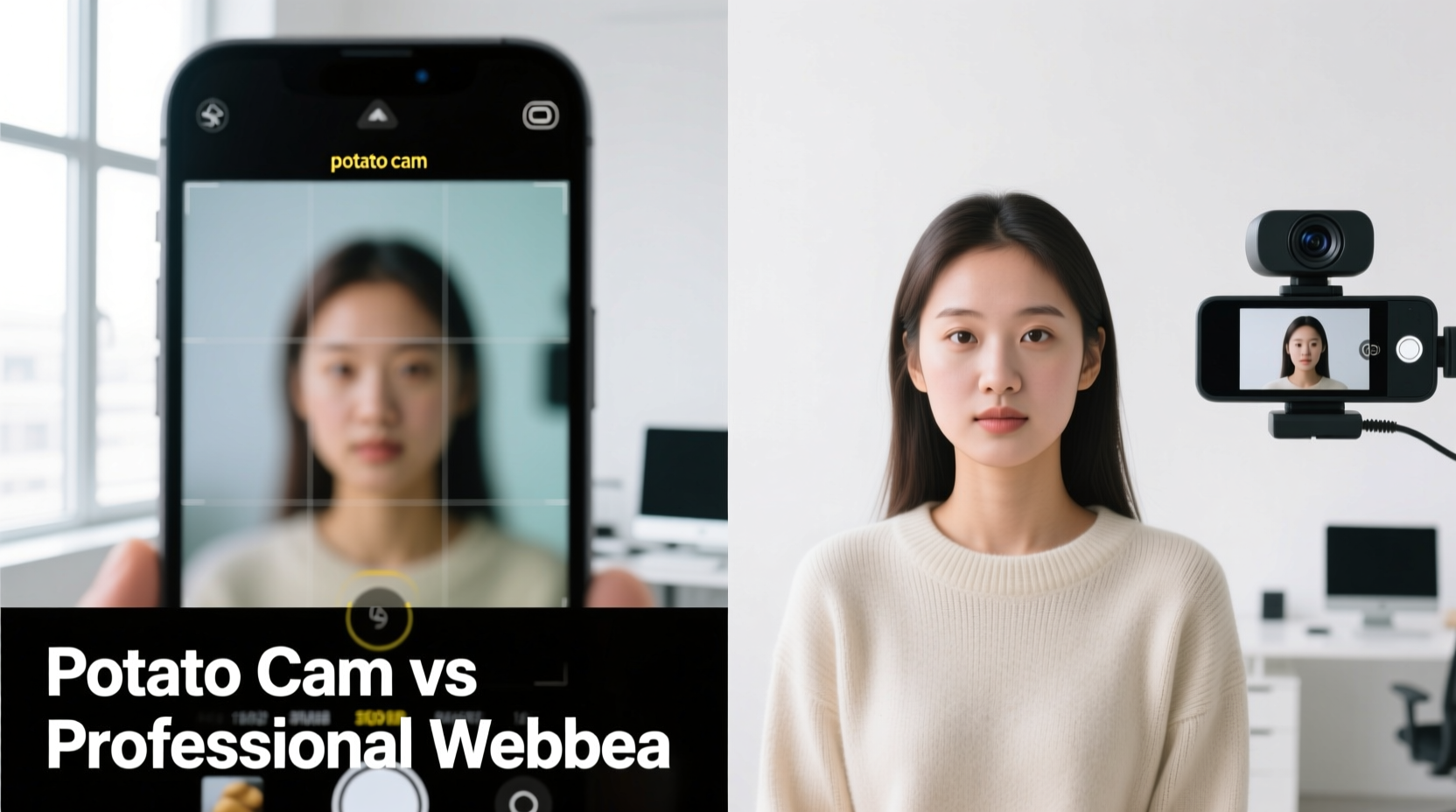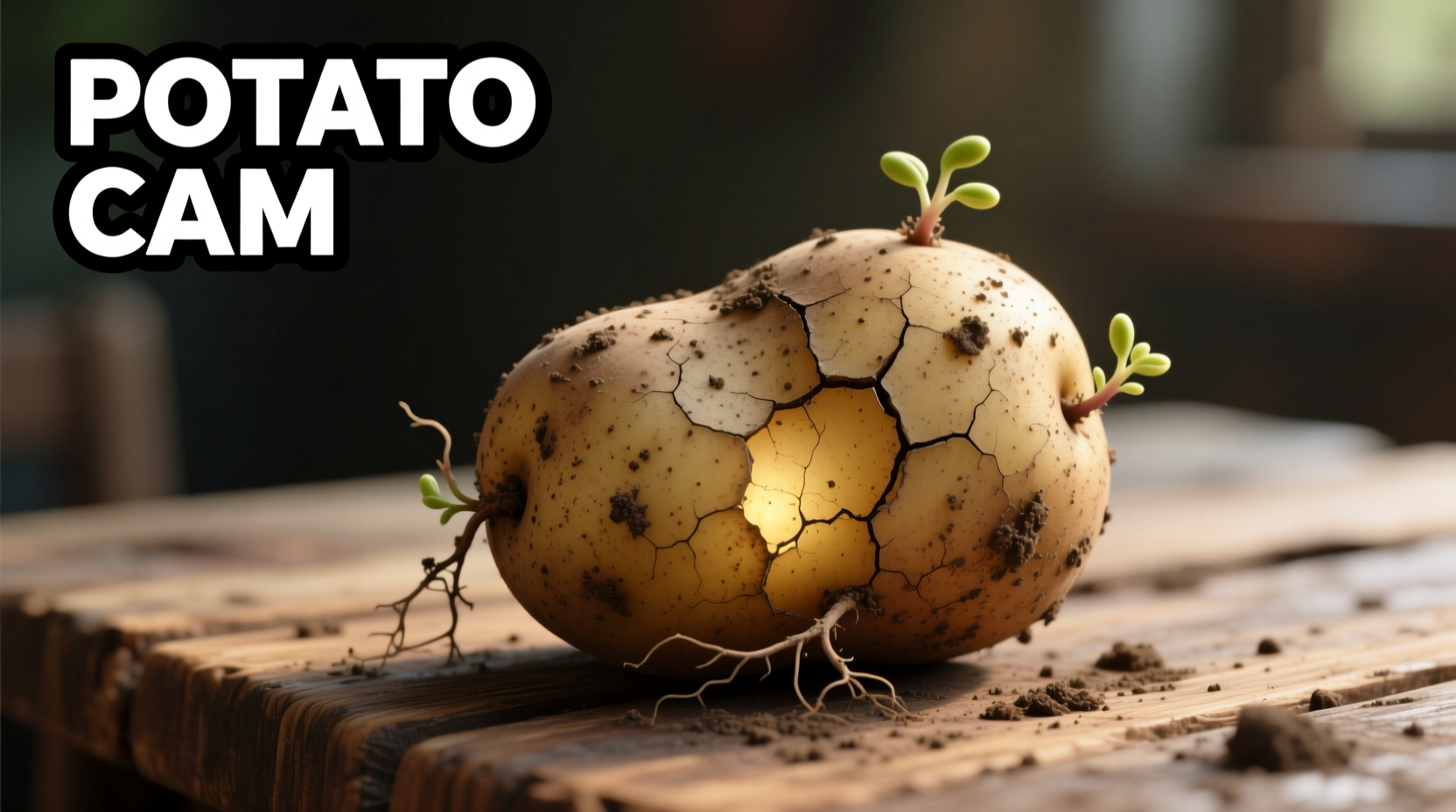What Exactly Is a Potato Cam and Why It's Hurting Your Professional Image
When tech enthusiasts call a webcam a "potato cam," they're describing hardware that performs as poorly as a potato might if it tried to capture video. This slang term has gained traction in remote work circles to describe webcams that deliver subpar video quality - think pixelated images, inconsistent frame rates, and colors that make you look like you're lit by a haunted house spotlight.
According to recent communication studies, video quality directly impacts how colleagues perceive your professionalism. Researchers at Stanford University found that participants rated speakers with higher video quality as 23% more competent and trustworthy compared to identical presentations delivered via "potato cam" quality video. This isn't just about vanity - it affects your career trajectory in our increasingly digital workplace.
How to Diagnose Your Own Potato Cam
Before you can fix your video quality issues, you need to confirm whether you're dealing with a genuine potato cam. Here's a practical self-diagnosis checklist you can complete in under five minutes:
| Test | Potato Cam Indicator | Professional Quality Indicator |
|---|---|---|
| Resolution Check | Max 480p or blurry 720p | Clear 1080p at minimum |
| Low-Light Performance | Grainy, dark, or washed-out image | Maintains detail in moderate lighting |
| Frame Rate | Stutters below 15fps | Smooth 30fps+ performance |
| Color Accuracy | Washed-out or unnatural skin tones | Natural color reproduction |
Simply open your video conferencing app, run through these tests, and compare your results. If your camera fails two or more categories, you're working with a potato cam that's undermining your professional presence.

Immediate Fixes That Don't Require New Hardware
Before you consider replacing your webcam, implement these five proven techniques that dramatically improve video quality with existing equipment:
Optimize Your Lighting Setup
Professional photographers know that lighting makes or breaks visual quality. Position yourself facing a natural light source (window) with no direct sunlight. Add a second light source at a 45-degree angle to eliminate shadows. Avoid backlighting which turns you into a silhouette. This single adjustment can transform a potato cam into a serviceable video tool.
Adjust Software Settings Strategically
Most video conferencing platforms have hidden settings that can compensate for hardware limitations. In Zoom, enable 'Original HD' under Video Settings. In Teams, adjust the 'Bandwidth' settings to prioritize video quality. Reduce background movement in your environment to help your potato cam maintain frame rate during calls.
Positioning Matters More Than You Think
Elevate your camera to eye level using books or a stand. Maintain 3-5 feet distance from the camera - too close emphasizes flaws, too far reduces detail. Ensure your background is uncluttered but not completely blank, which creates visual discomfort for viewers.
Leverage Free Enhancement Software
Applications like OBS Studio (free and open-source) include filters that can sharpen video, adjust color balance, and reduce noise. The 'Color Correction' filter specifically helps compensate for poor color reproduction in potato cams. Many professionals use these tools to make budget webcams perform like higher-end models.
Manage Bandwidth Competition
Close unnecessary applications and browser tabs during video calls. Prioritize your conferencing app in your router's Quality of Service settings if available. This ensures your potato cam gets sufficient bandwidth rather than competing with background downloads.
When Your Potato Cam Simply Won't Cut It
While the fixes above help significantly, certain professional contexts demand better hardware. Video interviews, client presentations, and leadership meetings require reliable, high-quality video. Consider upgrading when:
- You regularly experience dropped frames during critical meetings
- Your current setup fails to convey nonverbal communication effectively
- You work in fields where visual detail matters (design, healthcare, education)
When shopping for replacements, focus on these often-overlooked specifications beyond just megapixels:
- Low-light sensitivity (measured in lux) - crucial for consistent performance
- Frame rate stability at various lighting conditions
- Color depth (higher bit depth = more natural skin tones)
- Auto-exposure recovery speed when lighting changes
Long-Term Solutions for Professional Video Presence
Building a reliable video setup requires understanding your specific needs. For most remote professionals, a $60-100 external webcam with good low-light performance outperforms built-in laptop cameras costing thousands more. The Logitech C920 series remains a professional standard for good reason - it delivers consistent 1080p video with excellent color reproduction across lighting conditions.
For those on tighter budgets, repurpose an old smartphone as a high-quality webcam using free apps like EpocCam. Most modern smartphones have superior cameras to laptop webcams and can connect directly to your computer.
Remember that consistent video quality builds professional credibility. A survey by Owl Labs found that 67% of remote workers reported increased trust from colleagues after improving their video setup. In our digital-first work environment, your webcam isn't just hardware - it's your professional face to the world.











 浙公网安备
33010002000092号
浙公网安备
33010002000092号 浙B2-20120091-4
浙B2-20120091-4